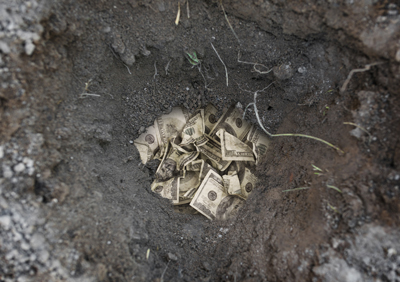 How often is your standardized approach resulting in an over-designed ground grid? Stop wasting your dough by blindly erring on the side of caution simply because you don’t know what lies beneath.
How often is your standardized approach resulting in an over-designed ground grid? Stop wasting your dough by blindly erring on the side of caution simply because you don’t know what lies beneath.
While standardizing a ground grid design seems like it would save time and money, this approach fails to consider a site’s soil composition and resistivity. Soil resistivity is affected by variables such as layer composition, moisture, molecular structure, salt content, other chemicals, etc. Making assumptions based merely on a site’s location, visible soil observations, or soil borings is not enough to determine its apparent resistivity.
For example, since moisture typically increases conductivity, a wet location may seem like a good bet for lower resistivity – but the soil in a wet location can still be highly resistive if it contains a lot of sand. On the other hand, even in a desert, soil resistivity can be low if that desert was once covered by an ocean and the salt remained.
So, Standard Designs are Bad?
Not necessarily. According to Hilton Mills, grounding specialist at Hood Patterson & Dewar (HP&D), standard designs may be a good starting point, but the final design should reflect site-specific soil resistivity. He explains, “it is very important that the soil at the intended construction site be measured prior to designing the ground grid.”
He continues, “I cannot tell you how many times I have seen, particularly with larger organizations, companies that utilize a one-size-fits-all [design] that is completely inadequate – they spend all this money to build a facility that ultimately exposes them to costly risks rather than simply doing it right from the beginning. ![]() Conversely, we see the opposite approach – gross over-designs that call for much more copper than is actually needed to achieve adequate safety margins, driving material and construction costs way up.” Mills went on to say that standards have their place, but that variables, especially those affecting life-safety, must be incorporated to allow for site-specific considerations.
Conversely, we see the opposite approach – gross over-designs that call for much more copper than is actually needed to achieve adequate safety margins, driving material and construction costs way up.” Mills went on to say that standards have their place, but that variables, especially those affecting life-safety, must be incorporated to allow for site-specific considerations.
Not Too Much, Not Too Little
So, how can you make sure the ground grid is properly designed for the soil at your site?
- Hire a grounding specialist to perform site-specific soil resistivity tests
- Make sure the ground grid design engineer analyzes the resistivity results and incorporates them into the modeling software to design a suitable ground grid
- Have your grounding specialist return to perform ground grid testing after installation to verify that the grid is installed properly and meets design values
These three steps will save you dough and help you protect the people and equipment at your facility with a ground grid design that is just right.

